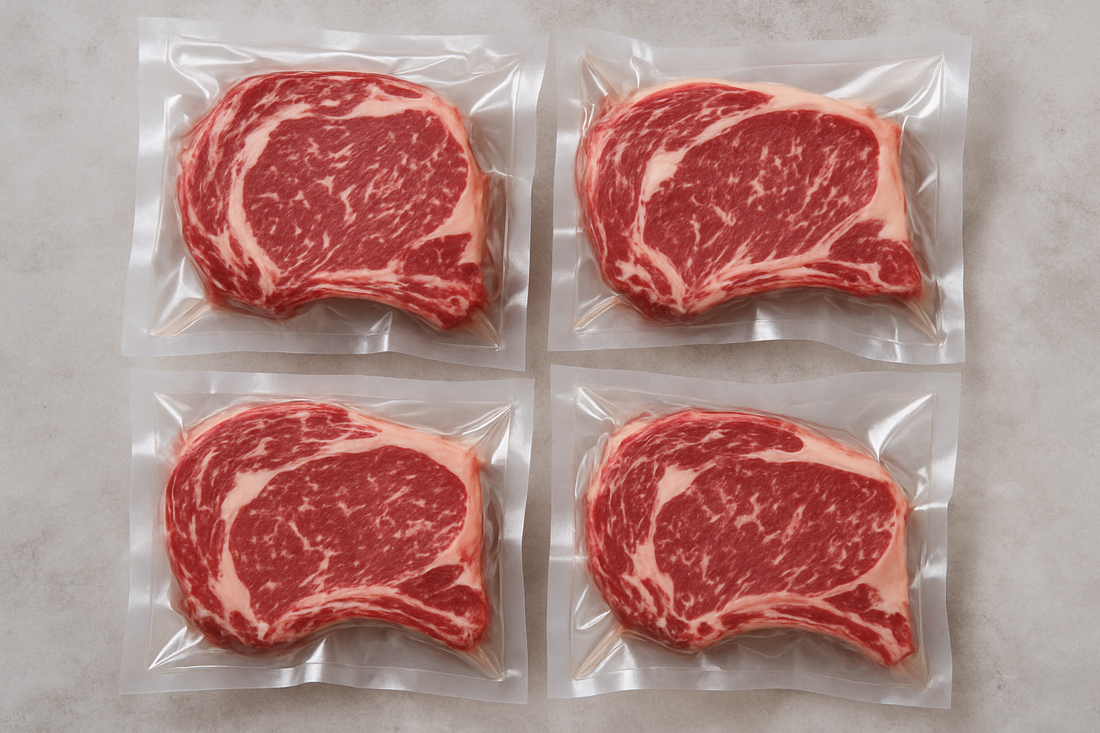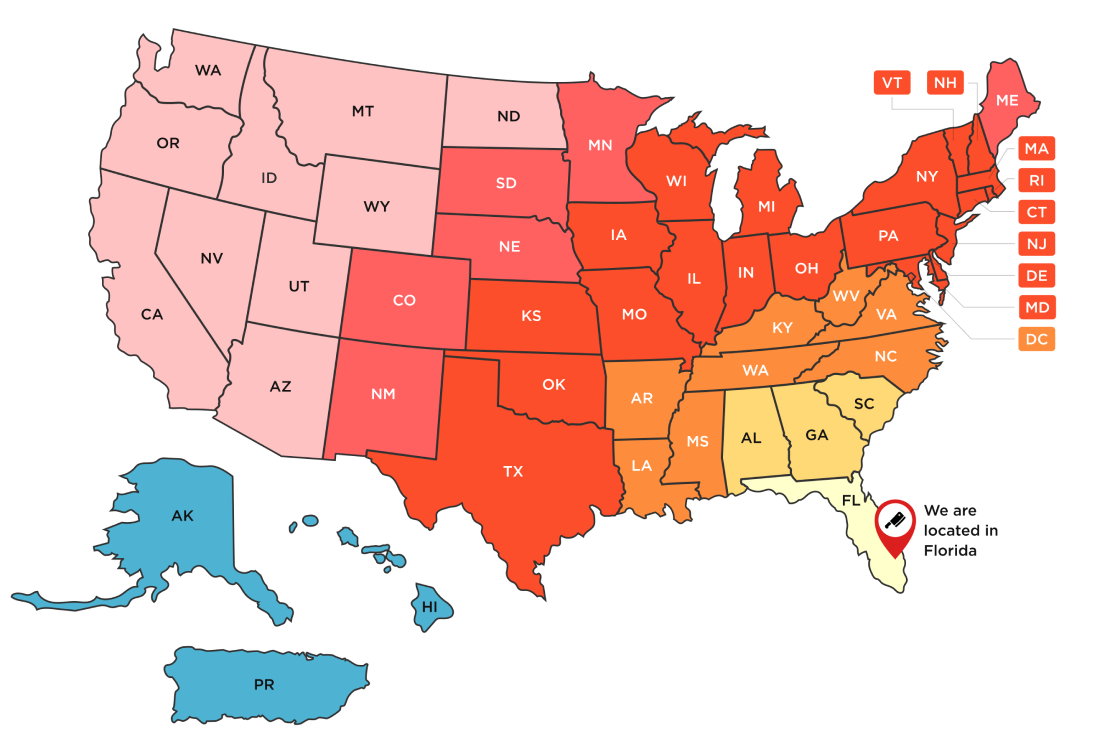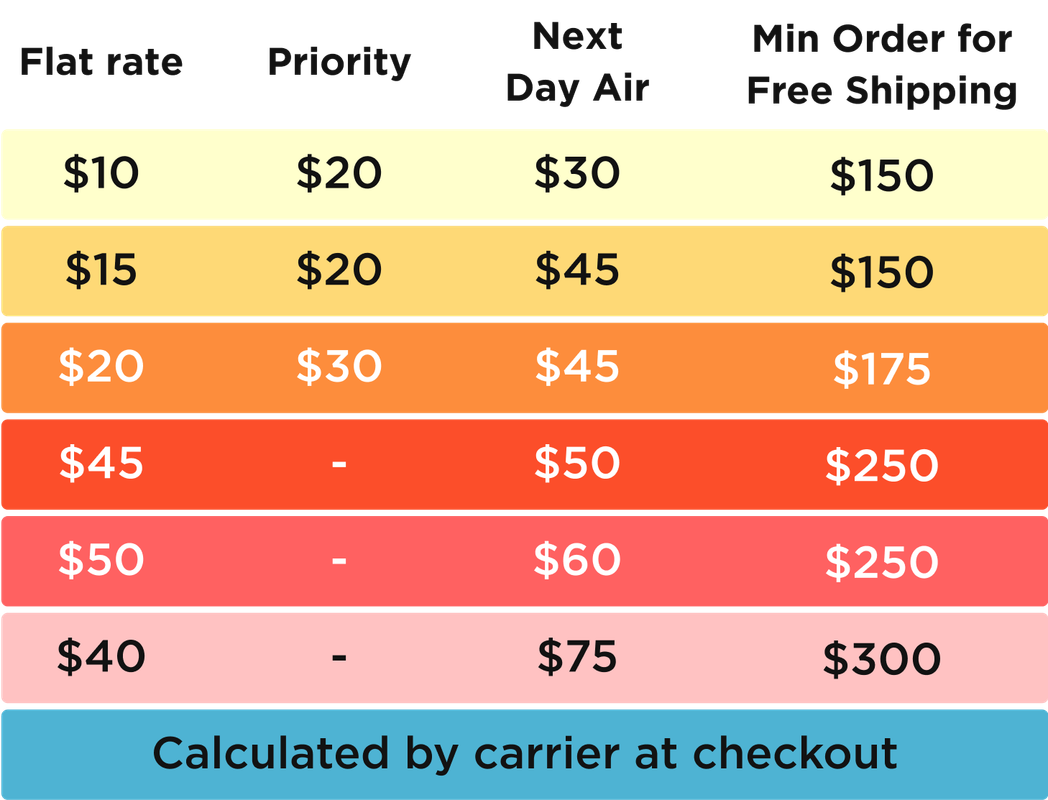
Why Vacuum-Sealed Meat Actually Matters (and Supermarket Trays Don’t)
At Meat N’ Bone, we vacuum-seal every single item we sell. Whether it’s a dry-aged ribeye, a thick-cut pork chop, a sushi-grade tuna steak, or an elk loin — it all gets packed tight, with care, and without air.
This isn’t a gimmick. It’s not about looking fancy. It’s about preserving flavor, texture, and freshness, and it’s one of the biggest differences between what we do and what you’ll find at the grocery store.
Let’s break it down.
Grocery Store Packaging vs. Vacuum-Sealed
That plastic-wrapped foam tray at your local supermarket? It’s built for shelf appeal, not for quality. Grocery stores often use what’s called modified atmosphere packaging — they fill the package with gas to keep meat looking bright red under fluorescent lights. It’s smoke and mirrors.
That color doesn’t mean the meat is fresh. It just means it’s been engineered to look fresh. And once it hits your fridge, that illusion starts to break. The color fades. The texture softens. The smell shifts. You’ve got a day or two before things go south.
We don’t play that game. We seal our cuts tight — removing oxygen and locking in what’s real. No air. No gas. No show.

Why would you buy a little over 1lb of sirloin, of low grade choice, on a tray when you can buy our Tenderloin Kebabs for the same price?
Real Freshness Has a Different Look
Vacuum-sealed beef doesn’t show up bright red. That’s a sign of exposure to air. Instead, it comes out deep red or even purple — the natural color of fresh, untouched meat. Give it five minutes after opening and it’ll bloom to that rich, cherry red you’re expecting. That’s how you know it’s been protected.
Same goes for pork and seafood. Pork should be pink and clean, not slimy or pale. Fish should smell like the ocean — fresh, briny, clean — never sour or sharp. Vacuum sealing locks in those characteristics so they show up to your door like they just came off the butcher’s table.
According to food saver vacuum sealing changes the game for all types of food.

Freezer Burn? Not Here.
When meat sits in air — even in a freezer — it dehydrates. That’s what causes freezer burn: moisture escaping, texture breaking down, flavor vanishing.
Our vacuum-sealed proteins stay airtight. You can toss a wagyu strip, some chorizo, or a whole branzino in the freezer for months, and it’ll come out looking and tasting like it was packed yesterday. No ice crystals, no rubbery edges, no dry spots.
That’s especially critical for seafood and game, which are more delicate. Halibut, venison, duck breast — these don’t hold up well to sloppy packaging. Ours do, because we seal them tight while they’re still perfect.
Texture, Smell, and Cooking Experience
Oxidation isn’t just about shelf life — it messes with the entire eating experience.
Vacuum-sealed meat keeps its structure. You’ll feel it when you press a raw steak — firm, dense, well-shaped. Pork holds its grain. Chicken stays plump. Fish stays glossy and tight.
The smell? Clean. Maybe earthy, maybe grassy, maybe a touch of mineral. But never sour. Never off. If it smells bad, it’s not fresh — simple as that. With us, if that ever happens, we replace it. No questions.
And when it’s time to cook, everything’s ready. Want to sous-vide? Drop the whole bag in the water. Want to marinate? The sealed pouch is the perfect container. Want to store it longer? Stack it in the freezer. Done.
Why We’ll Never Go Tray-and-Wrap
This isn’t just about presentation. It’s about doing things right. Supermarkets cut for volume. We cut for quality. Supermarkets use machines. We use people. Supermarkets bulk pack. We seal individually — one steak, one cut, one perfect seal.
Vacuum-sealing costs us more. It takes time. But it’s worth it. Because when you open a package from Meat N’ Bone, it should smell right, look right, and cook right — no surprises, no off days, no excuses.
What It Means for You
-
Longer shelf life — days to weeks, not hours
-
Cleaner smell and color — no sour funk, no color games
-
Zero freezer burn — just real meat, preserved right
-
Sous-vide and storage ready — no mess, no repackaging
-
Consistent quality — whether it’s wagyu or wild-caught snapper
This is why our customers come back. Because once you’ve tasted meat that’s been truly protected, going back to a styrofoam tray feels like a step down — and it is.
So yeah, it’s “just” packaging.
But it’s also the reason our food arrives looking and tasting like it just left the butcher’s table.
← Older Post Newer Post →








